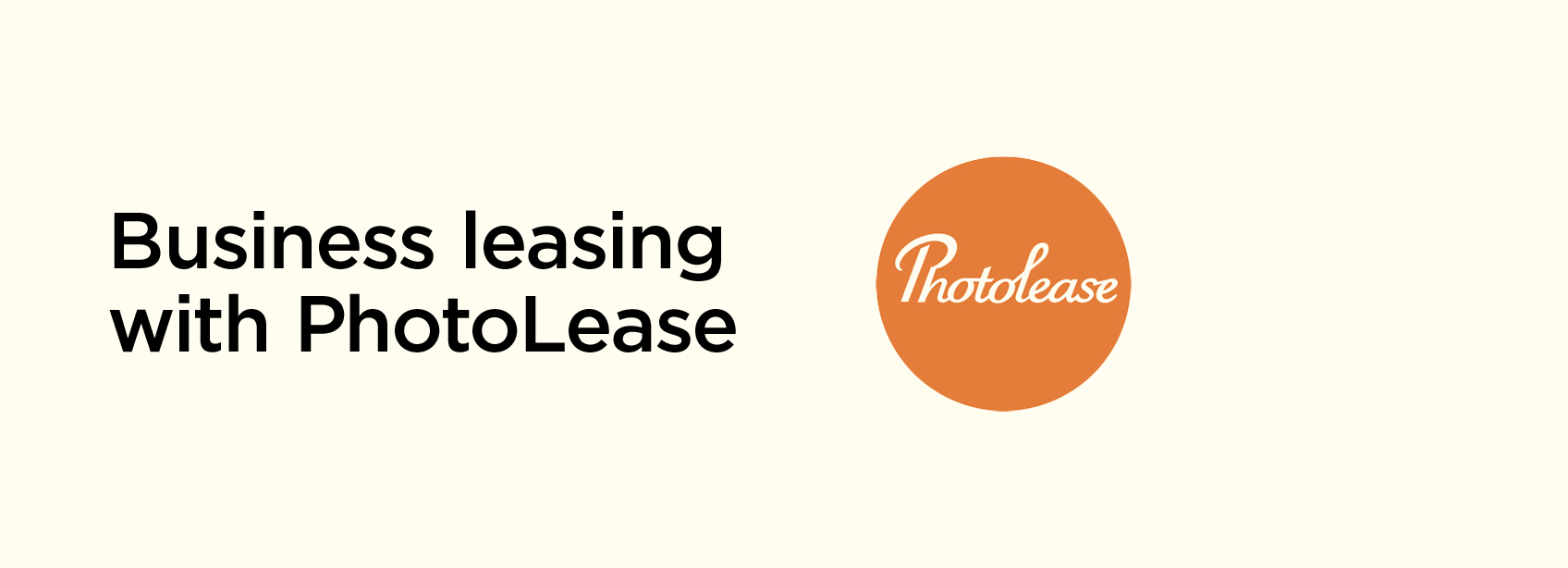Wex Photo Video has partnered with PhotoLease, the only specialist finance company in the Photographic Industry to provide you with the flexible Finance option for your business. Photolease has over 30 years of experience and their success has been built on their ability to understand the customer’s needs.
They have done this through establishing close relationships with all their clients and providing support to prominent professionals and aspiring photographers alike. Spanning three decades, Photolease has been a constant presence in the industry, and now in partnership with Wex Photo Video they are here to help you grow your business.
“I buy appreciating assets and rent depreciating assets”
- John Paul Getty
To apply or for further information call our Corporate Sales Team on 01603 208469, or Photolease on 020 7613 0633, or visit www.photolease.co.uk
Accountants and business advisers all agree that conserving cash is essential to protect businesses from fluctuations in turnover, bad debts, and unforeseen costs. In fact, a recent survey shows that approximately 8 out of 10 accountancy practices and 85% of the Times Top 100 UK Companies lease equipment.
To this end, equipment should be acquired by spreading the cost so that it pays for itself over its useful working life. You probably remunerate your staff on a ‘pay as you earn’ basis via a monthly salary. Leasing allows you to do the same with your equipment and treat it as an overhead rather than a rapidly decreasing asset.
As your business grows and advances, so does technology. Leasing enables you to take advantage of these changes. You can equip your business today and use your working capital to develop your business tomorrow. Leasing is the flexible and sensible way to manage your cash whilst making sure you always have the very best equipment.
Many people want to own their equipment for emotional reasons. See below to find out why this is not a smart decision - Leasing is!
Cashflow
With leasing, there is minimal impact on liquidity. Only the first month's rental is payable at the time of signing the lease plus a documentation fee. Lease rentals are fixed during the term of the agreement offering a simplified approach to managing expenditure. The lessee is protected from changing interest rates, enabling accurate budgeting and cash flow projections.
Maintains Credit Lines For Other Use
Equipment can be acquired without impacting other credit lines, such as loans and overdrafts, making further borrowing easier.
Total Solution Finance
The PhotoLease finance agreement can include not only hardware but also software, installation, and training.
Cost Efficient
It is good practise to pay for technology over the period that the asset is delivering revenue to the business. The equipment is paid for over its working life thus conserving capital and in spreading payment buying power is maximised.
Technology Refresh
Avoid the problems associated with owning obsolete technology which can hinder growth in business. Leasing offers the opportunity to refresh and pay for the equipment as it is used. Financing equipment creates a route to acquiring the latest technology as during the agreement new equipment can be added or substituted.
Flexibility and Control
The PhotoLease agreement offers a flexible approach towards paying for equipment. After entering into a lease with PhotoLease the agreement can be settled before the end of the term and there will be a reduction for early payment. The period of the lease can be shortened or monthly repayments reduced by the payment of a lump sum at any stage in the agreement.
What Happens at the End of a Lease Agreement?
The equipment must either be returned to PhotoLease or the lessee has the option to enter into a Secondary Period. If entering a Secondary Period, a one-off payment equal to one monthly rental is all that is required to extend the lease indefinitely.
Ownership
Existing legislation prevents the lessee obtaining ownership of the asset directly from us. However, the customer has such exclusive use of the equipment that he is in effect the owner. In fact, whilst title cannot be passed to the customer, all equity tied up in the goods is theirs. This means that if at any stage during the Secondary Period the customer wishes to sell the goods, PhotoLease raises an invoice and refunds the proceeds to the customer.
What about borrowing the money?
It is advisable to maintain lines of credit for future unexpected needs or short-term funds. Borrowing to finance equipment leaves a business vulnerable to interest rate fluctuations and a loan is unlikely to offer you the same flexibility to change the equipment by upgrading or adding additional items. Banks are also able to ‘call in’ overdrafts at any time unlike the credit arranged via a lease which is guaranteed for that period.



